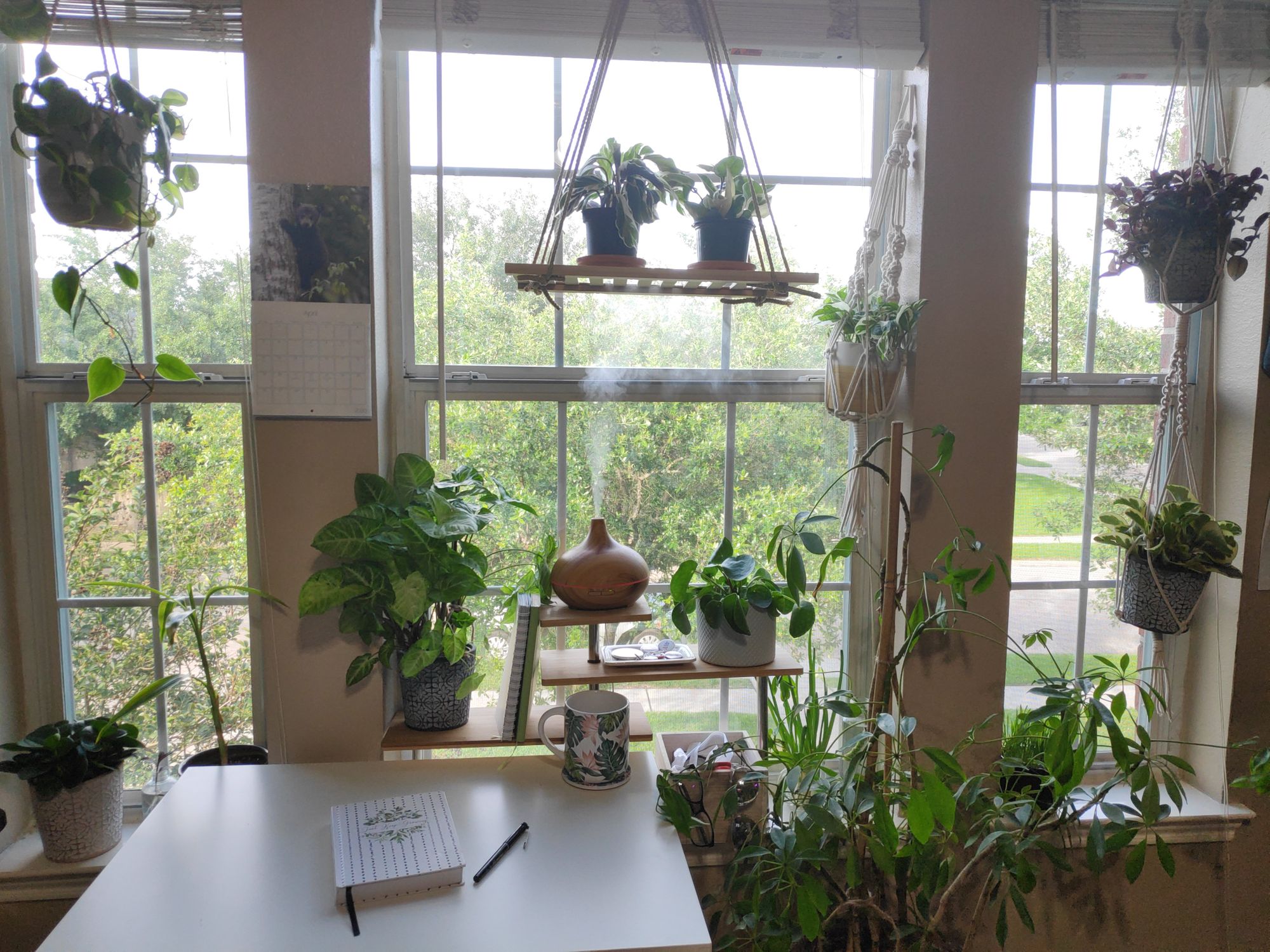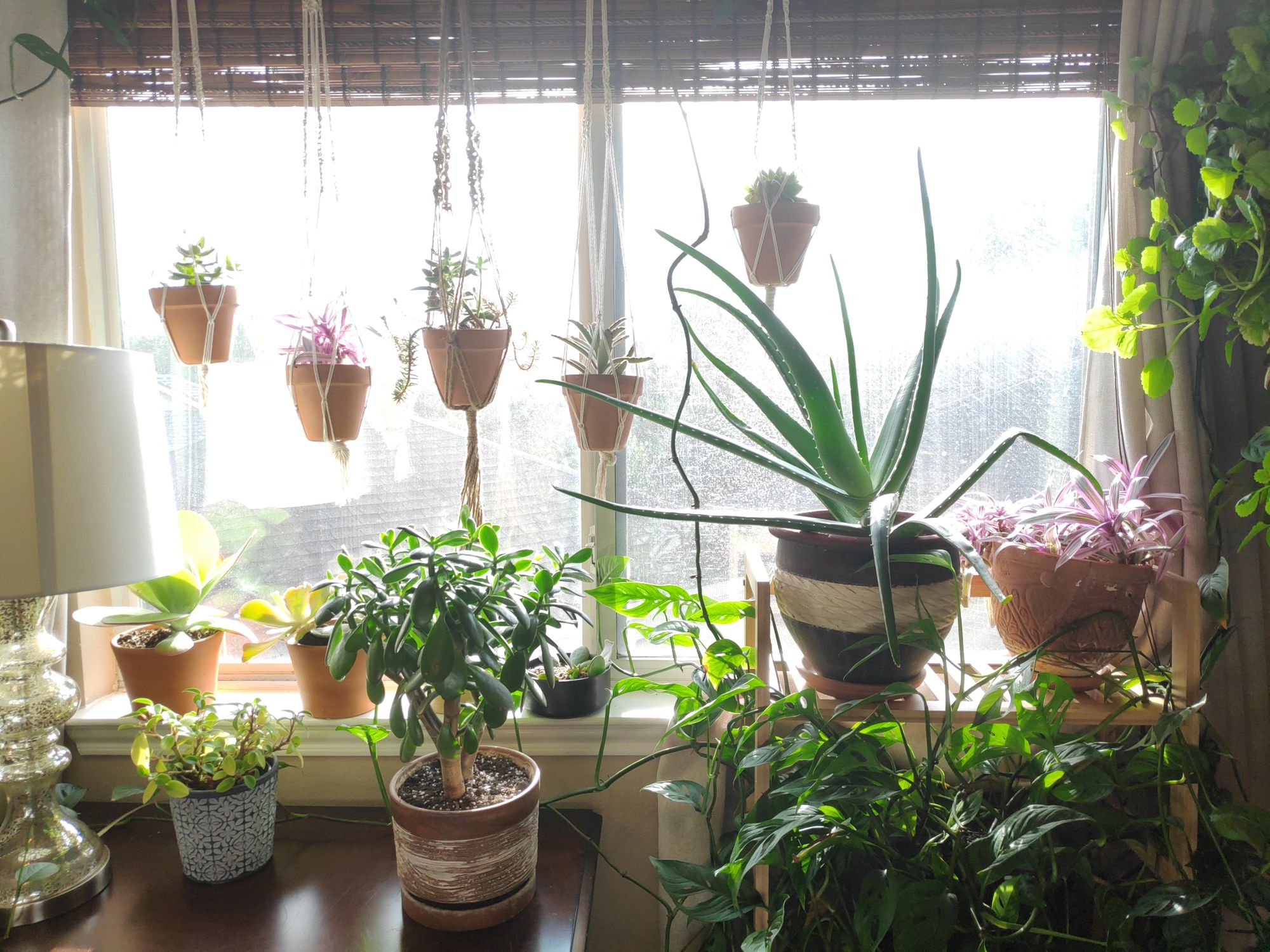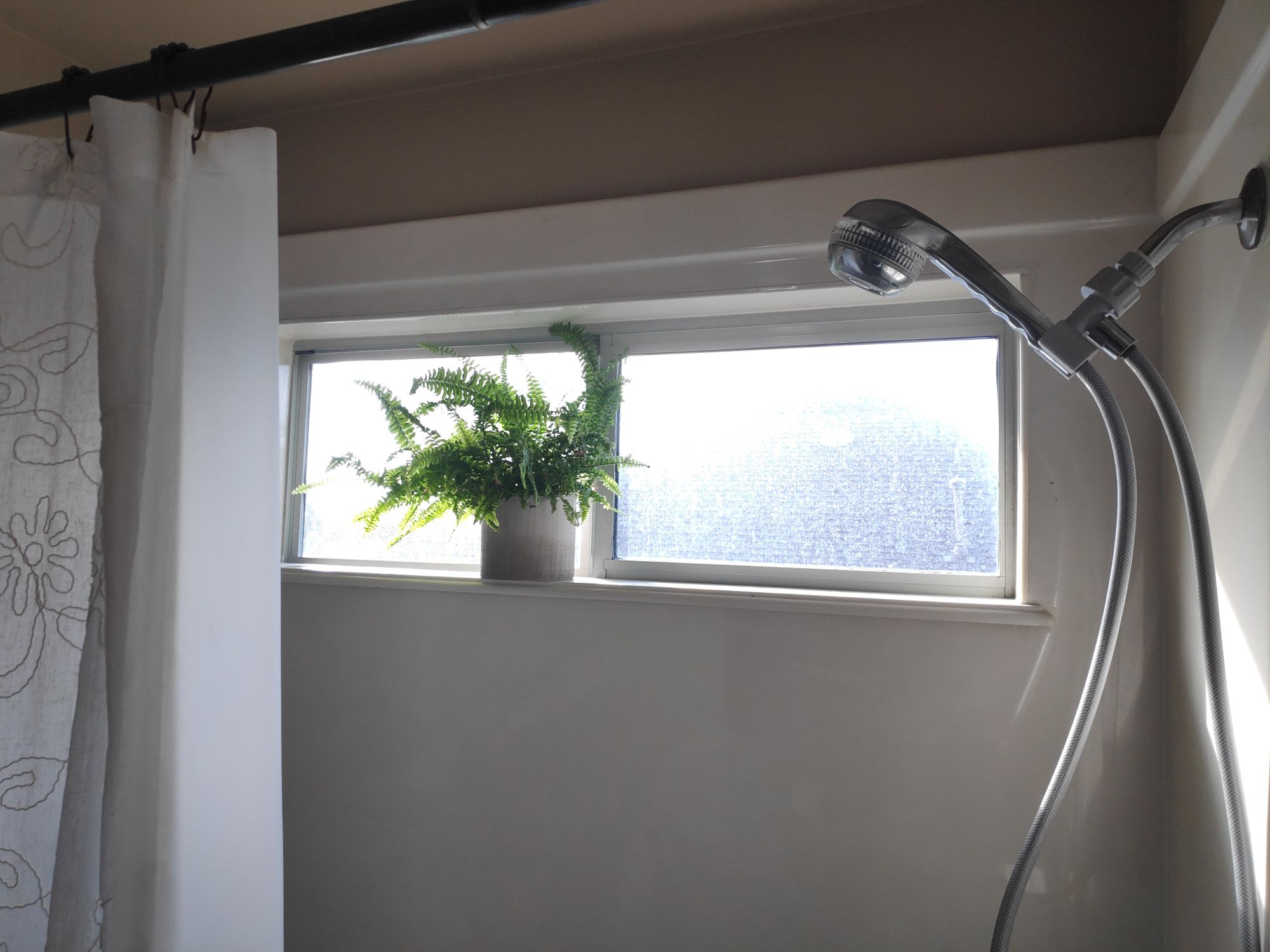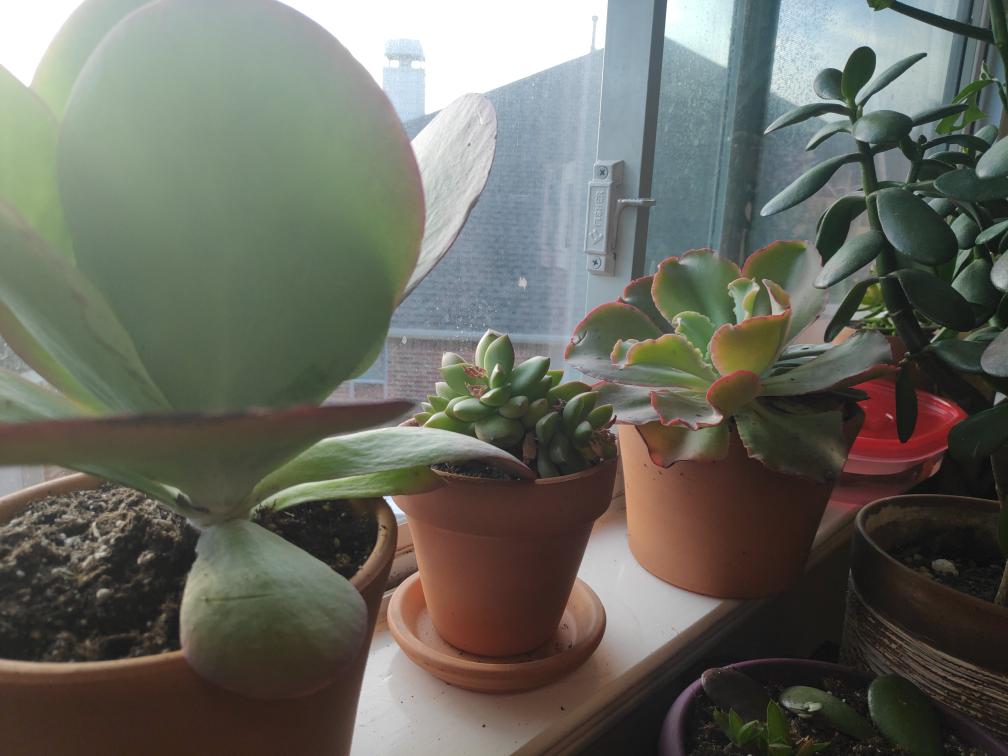Finding the right space for your houseplant is the first step in giving it a long and happy life. There are two main factors to consider when picking a new home for your plant: light requirements, and humidity requirements.
If you don't have a home with multiple light sources to choose from, you may have to get creative to make a space more welcoming to your plant. Before you bring home a new plant, it is always best to be sure you'll have a the right space for it.
Light
Light is the number one factor when picking a space for your plant. Most plants can safely be categorized as either requiring high, medium, or low light. To be clear, low light doesn't mean no light! In a low light space, you should still be able to read a book with the lights off.
Sources of light are typically either windows or artificial indoor lights. Plants can photosynthesize using artificial light, however it is rarely as effective as natural sunlight (unless you have a grow light). Direct light is when the rays from the sun fall directly onto the plant. Indirect light is when the light is diffused, either throughout the room or with a filtering curtain.

Judging Window Light
Windows can provide a range of different levels of light, primarily depending on their size and orientation. In the Northern Hemisphere, Southern facing windows get the most light throughout the day. Eastern facing windows will get direct morning sun, and bright indirect light the rest of the day. Western windows will receive bright direct afternoon or evening light, and Northern windows receive the least amount of light throughout day.
Of course, this is just generally speaking. If your Southern window is blocked by a large apartment building right next to you, another window may actually provide more light if there is less blockage.
Get to know the light your space provides by walking through your home at various points of the day - morning, afternoon, and evening. Take note of which rooms are naturally bright (with the lights off), and where the direct sun rays fall.
Know Your Plant's Light Needs
Even if you don't know the name of your plant, you can often guess from the shape and texture of the plant what the plant's light requirements will be. In general, succulent plants and cacti require very high light and are tolerant of direct light. There plants are able to survive periods of drought, which is often associated with a hot and bright climate.
Another clue that your plant may light high is fuzziness on the leaves. Fuzz on leaves is an adaptation which bounces the light away from the leaves, meaning it likely comes froma high light environment.
Typically, tropical indoor plants (like Monsteras, Peperomias, and other common tropicals) are fine in medium-bright indirect light. Tropical plants rarely do well with direct sunlight, and too much light can burn the leaves or cause a bleaching effect. Then-leaved plants are particularly susceptible to sun damage.

In general, the darker a plant is the more tolerant it is of low light conditions (compared to similar plants in it's family). The green on leaves comes from chloroform, a necessary component of the photosynthesis process. When plants have more chloroform, they are generally better at photosynthesizing and therefore need less light.
Similarly, the more variation (patterned light coloration on the leaves) a plant has, the more light it will need. Variegated plants are at risk of reverting to their unvariegated state if they don't receive enough light.
Humidity
Humidity is the amount of water in the air. Typically, the only room in a home with high humidity throughout the day is the bathroom. Other rooms may require humidifiers or other methods of increasing the humidity. Over-humidifying a plant may result in rot, while under-humidifying a plant may result in browning and crisped leaves. Neither is good, so knowing your plant's humidity requirements is essential.
Low Humidity
Some plants, like succulents and cacti, evolved in very dry climates. These plants typically require low humidity, and may rot in high humidity situations. These plants will thrive in the driest part of your house (as long as the light is bright enough). In you have a naturally dry house and do not wish to invest in a humidifier, succulents and low-humidity plants will be most comfortable in your space.

High Humidity
Tropical plants are the opposite. They range from room-humidity to high-humidity needs. Plants with high humidity needs, like Ferns or Calathea, would likely do well on a bathroom window, or in a room with a humidifier. High humidity plants also do well in clusters, as plants will increase the humidity around themselves.
I personally recommend this humidifier, which I've used with my plants for years and can be seen in the photo above.
Many common houseplants, however, are perfectly fine in the standard humidity you likely already have in your home. Be sure to check a plant's humidity needs before finding it a new home.
Other factors
Other factors you want to keep in mind when choosing a home for your new plant include temperature, pet safety, and accessibility.
Make sure your plant won't get too hot or cold where you put it, or else it may stress or damage the plant. Most common houseplants are comfortable at room temperature (between 70 - 80 degrees, F). You'll also want to avoid drafts, vents, or heaters, and keep in mind that windows and doors may get cold during winter.
If you have pets, ensure that any toxic plants are placed well out of the way of your fur baby.
Lastly, make sure your plant is in a space that is accessible enough to you to regularly check on it! You'll want to be able to feel the soil, check for pests, and spot any damage before it's too late.

